A Gravel(ish) Handlebar is the New Aero Road Bar
I’m building up a new aero road bike, and I’m putting a gravel handlebar on it. What I will establish below is that this is the road bar of the future, and it is in fact the road bar of the present among those who are the most particular riders in the pro cycling peloton.
I don’t mean that the exact bar I’m riding is the most aero road bar, but it’s close to it, if what we want to be "aero" is the whole "system", rider and machine.
Let’s start by looking at what’s getting ridden in the pro peloton right now, and I’m going to use a Slowtwitch favorite, Victor Campenaerts, as my example. There’s a thread about Victor right now on our Reader Forum, and he’s instructive because he’s a former triathlete – perhaps a future triathlete, when he’s had enough of bike racing on the world stage – and he’s the current record holder in the hour. He is known for being meticulous in his position and bike preparation; and he’s known for optimizing his aero position. Victor rides on Team Qhubeka Assos and that team is fortunate to have as its aero consultant Xavier Disley of Aerocoach, “Xavier” on our Reader Forum.
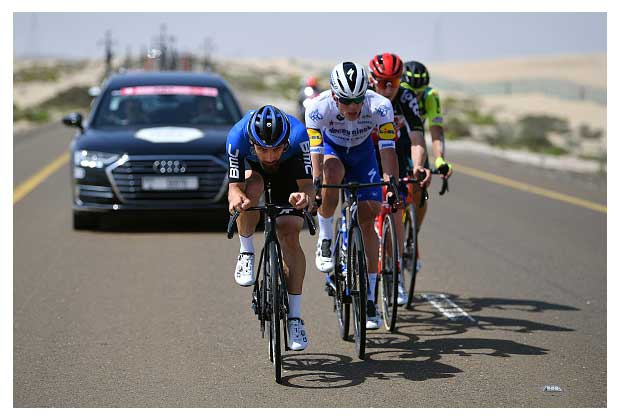
Included is a picture of Victor on his road bike and you’ll note some things. First, you can see who’s clearly the most aero rider in what is a hoods position (not typically considered the “aero” position aboard a road bike). Of course he is pulling this echelon, so, it’s important for him to be more aero while riding in front. But he’s not in the drops. He does spend a lot of time in the drops, but the hoods might be a more aero position for him, I think, because of his choice of handlebar (and we'll talk about why).
The bar he’s riding, and the way it’s set up, is notable. First, it’s got flare. Not flair! Flare. Well, it might have some flair as well, but the drops are, on center, probably 5cm wider than the bars are where the hoods attach. Furthermore, he’s got his hoods tilted inward, and twisted inward. This allows him to get his hands narrow, and keep his forearms narrow. Narrowness is among the most important aspects of riding in the aero position, and this is Victor’s way of borrowing from his superb aero position in service of his road position.
A lot of riders in the peloton – Victor's teammate Giacomo Nizzolo, and Remco Evenepoel of Team Quickstep – are rotating their hoods inward. (Rotating around a vertical axis, rather than slanting the hoods from the vertical plane. Victor does both: his hoods are both rotated inward and slanted from vertical.) Remco rides with hoods rotated inward, but not slanted because he doesn't ride with bars like these. The closest I can find to the bar Victor is aboard is the AR Road handlebar by ENVE (pictures and schematic below). The AR is an aero road handlebar, but it’s got a gravel-like flare. It’s got a hole in the center section, where the stem clamps to it, if you’re routing your hydraulic lines through the stem.
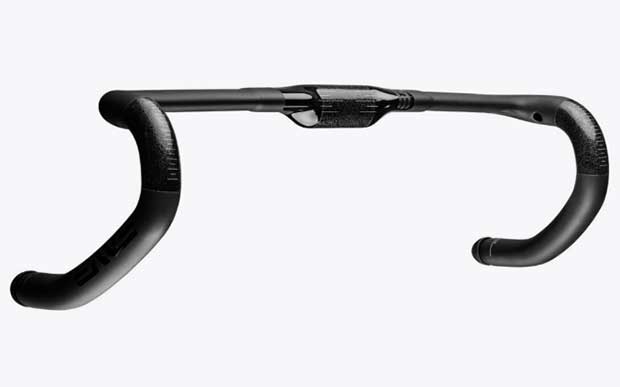
The interesting thing about this bar is that the aero theme is not just about the bar itself, but about the rider position when using this bar. The typical thing is for a bike fitter to measure your shoulder, as with a giant caliper, and if your shoulders (which correspond to a man’s suit size) are, say, 42cm wide – if you wear a suit jacket in size-42 – then you’d ride a 42cm bar. But… maybe not anymore. If what you want is an aero hoods position, but a stable drops position, you might now get both with (say) a 40cm bar (at the hoods) that measures 45cm at the drops. Or, you may opt for a 38cm bar at the hoods, and just get used to that narrow position when climbing out of the saddle with hands-on-hoods. You aren’t losing stability during sprinting because, remember, that bar would measure 43cm at the bottom of that bar, and probably 41cm or 42cm on center where your hand hits the drops.
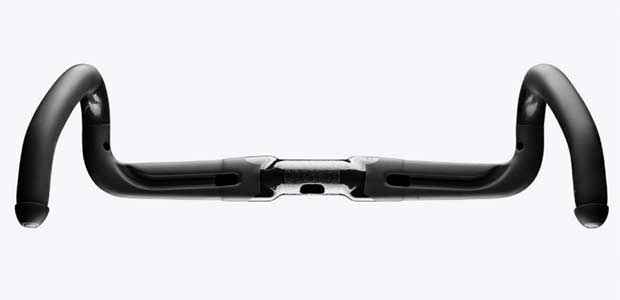
You can make this bar even more “aero” by tilting the hoods in, as Victor does, which brings your hands and arms in. in essence, you’re riding more like a 38cm or even 36cm bar – or narrower – in terms of your body’s narrowness. These guys are just learning how to ride with a narrower hands position when climbing out of the saddle. They still have that big base of support when sprinting and descending in the drops.
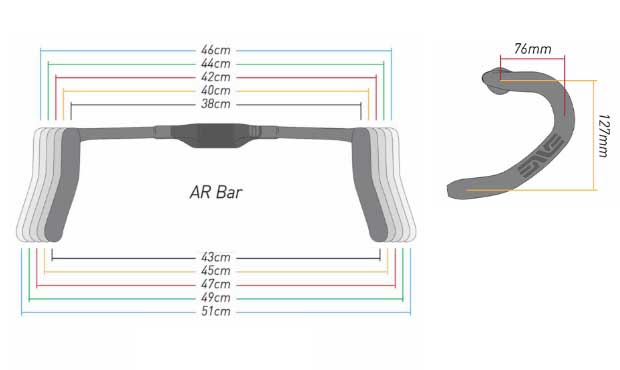
The odd thing, to me, is that I came to the same conclusion about the bar I want for road riding – same bar – but for very different reasons. The more I’m riding around on my gravel bike, the more I want something like a gravel bar on my road bike. I like the shallow drop. You can’t get that without flare, otherwise your wrists will hit the tops. Flare gets the drops out of the way of the tops. That shallow drop – maybe 120mm, maybe even 115mm – lets me use that drops position a lot more. I like a very short reach, very shallow drop bar, so, maybe 70mm of reach and 115mm of drop, if I can get it. That ENVE is 76mm and 127mm respectively, not quite what I want, but it’s very short and shallow for a road bar (it is a road bar, not a gravel bar).
I also like the fact that my hand does not have to grab a tube that is parallel to the direction I’m traveling. Aerobar extensions are made that way, but here’s the operating datapoint: the narrower your elbows, the more your hands like to grip an extension oriented fore-aft. But you’ll note that the road riders who’ve adopted that phantom aero position – laying their forearms on the tops – end up with hands that are facing palm downward. This is because the elbows are quite far apart from each other in this position. If your elbows are very close to each other, that twists your arms into a position that makes extensions work as they do. The farther apart your elbows, the more your hands want to grab something in the transverse plane.
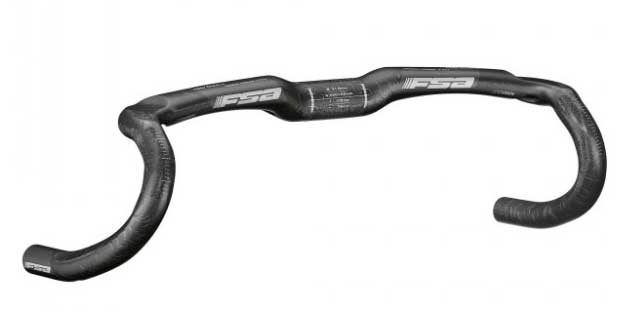
What I want is both a hood, and even more so the drops, that are not oriented fore-aft, but at a slight angle. In Victor’s case, the flare of the drops in his handlebar allows him a more ergonomic hand position, and the inward canting of the hoods does the same. I like what Victor’s got going in here, but I don’t know whether he needs, notices, or cares about the ergonomics. He’s doing what he’s doing (I suspect) for aerodynamic reasons.
Above is the FSA K-Wing AGX. Greg Kopecky wrote about this bar near the end of last year. If you look at the geometry of this bar…
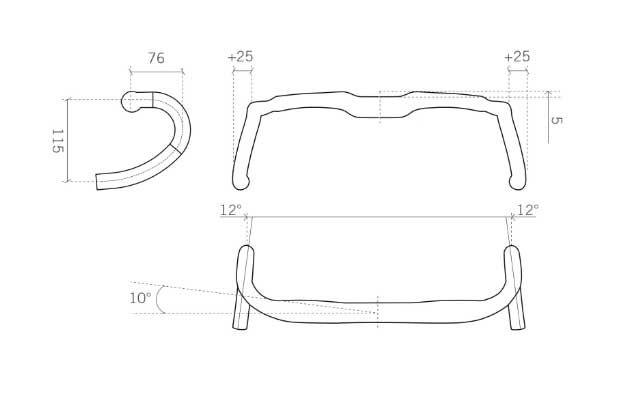
…you’ll see that it has a 12° flare, and that results, usually, in a bar width on-center that is 5cm larger at the terminus of the drops than it is at the compression ring (or whatever you call that part of the brake lever that attaches to the handlebar).
The ENVE AR has a handlebar reach and drop of 76mm and 127mm respectively. The FSA K-Wing AGX has an almost identical reach (75mm) and it has a shallower drop (115mm) though that shallow drop is not due to a tighter radius in the bar’s hooks, but the slight rise in tops of the bar versus the stem clamp section of the bar (Mr. Kopecky also wrote about this trend or tops-rise in gravel bars; tops-rise impacts the entire geometry of the bike, but that is a subject for another time).
Here’s the point I’m making: the ENVE bar, and the FSA bar, are very similar bars. But the ENVE bar is a road bar, and the FSA bar is a gravel bar. Yes, the ENVE bar is a little more aero in the shape of its tops, but, these bars each deliver what I want in terms of hand positions and geometry; they each have holes in the center section through which I can route hydraulic lines (if the stem uses this routing motif); and you’re going to see more and more road and gravel bikes routing their hydraulic hoses through the stem. Both of these bars have a max bar width, on center, that is 5cm larger than the width of the bar at the hoods.
What’s different between these bars? Well, the ENVE bar comes from size-38cm to size-46cm. The FSA bar is available from 40cm to 46cm. I think if FSA really thought of its bar as a road bar, it would have made a 38cm, but, it’s a gravel bar. In my opinion, this is not a gravel handlebar. It’s a handlebar. It is, for my purposes, just as much a road bar as any road bar FSA makes and, in fact, it would not shock me if, in 2 years, a bar with this bar’s features is FSA's best-selling road bar. As to the ENVE bar it is sold out last I checked, which probably speaks to its utility and desirability.
Victor Campenaerts image ©Getty Images; Justin Setterfield


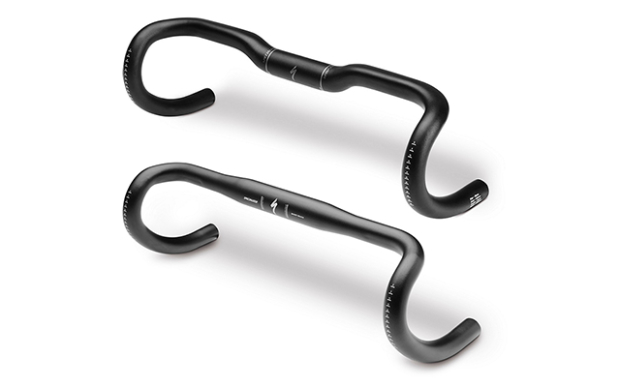
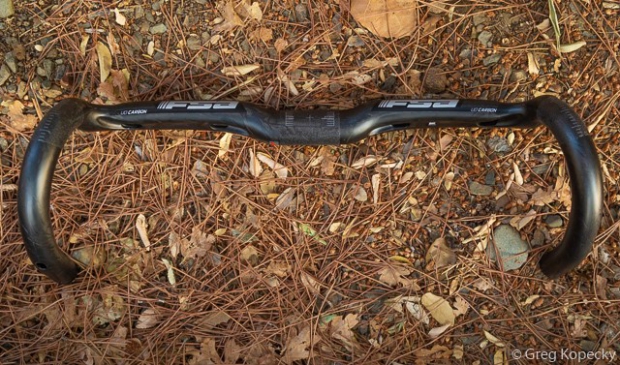

Start the discussion at slowtwitch.northend.network